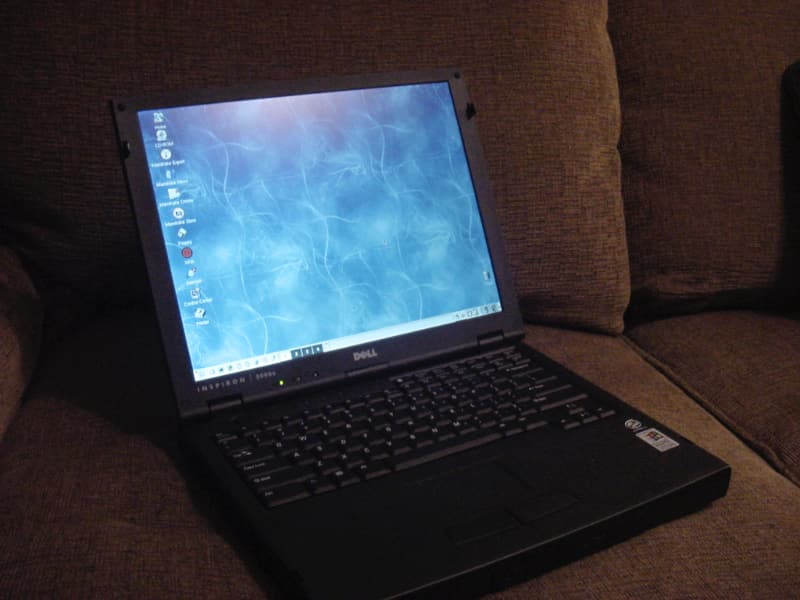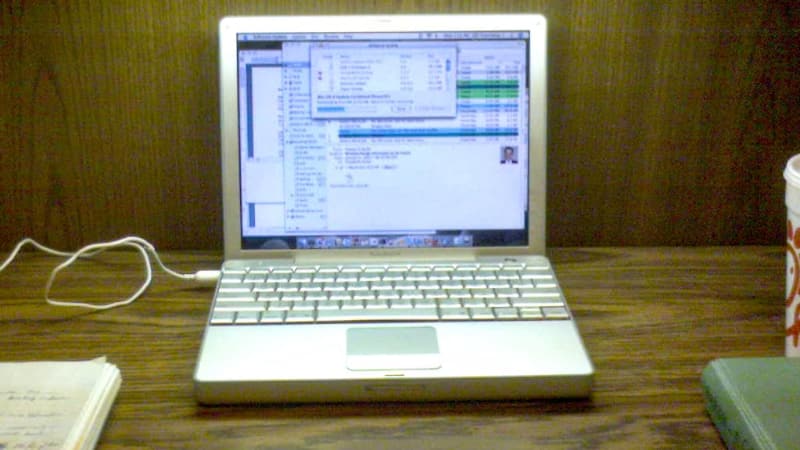
My recent column on Apple’s declining software quality hit a nerve. So why do any of us put up with software that grows increasingly buggy? One word: hardware.
Telling in many of the comments about my piece was a repeated refrain, “Apple’s software keeps getting worse, but I can’t imagine going through the downgrade to other hardware.” Apple knows how to turn out very good quality pieces of hardware and, for many purposes, stands alone.
That’s been largely true for the last couple of decades. The half-decade of Apple Silicon has cemented this position. At any price point Apple contends, Macs, iPads and iPhones are either without peers or at the top of the market in build quality and processing power. The Mac mini isn’t the cheapest computer, nor is the base iPad the cheapest tablet, but they are the cheapest good options and so it goes on up.
Apple’s hardware is not just good; it is designed carefully to work together. While making the case about software bugs, I alluded to various functions that make abandoning ship more than just a downgrade in pure hardware quality. Even with a “good enough” tablet, acceptable earbuds and a decent phone, nothing works together at the same level Apple has achieved.
Do I want to give up using my tablet as an instantaneously available wireless display that automatically shares my laptop’s keyboard and touchpad? Do I want to give up having earbuds that flow between devices without so much as a button press?
Even buggy software gains a sheen in an environment of close integration of excellent devices. Had Steve Jobs embraced Mac clones in the late 1990s, an idea that would have made Apple primarily a software company, the flaws in MacOS and iOS — if they even still existed — would be only more glaring.
Uniquely well crafted and integrated hardware covers a multitude of software sins. We always use hardware and software together, so the sum of the parts is what matters. Even with diminishing quality, MacOS and iOS hold this card over the Windows-Android alternative, hamstrung as it is by a vast array of manufacturers’ varied, often contradictory, and routinely inferior hardware design choices.
Numerous responses to my piece on software hit a similar impulse to my own: if only there were hardware that was as good and worked together as well as Apple’s, jumping ship to Linux would be awfully attractive at this juncture. The mainstream Linux desktop, an ever elusive goal this publication was founded to advocate for a quarter century ago, feels so incredibly, tantalizingly close today.
For Apple aficionados troubled by the state of MacOS, the modern GNOME desktop on Linux beckons as a more faithful implementation of the ideals of MacOS than current MacOS does. GNOME is painstakingly consistent across its different apps and exudes the minimalist philosophy with which Apple’s hardware shines. Gone are the rough edges that always hindered the Linux desktop when I used to write about it regularly.
I helped a number of friends and colleagues make the jump to Linux desktops against the currents in the early 2000s when it was still weird. But, none of those Linux “migration” projects, even my own, stuck over the long haul. The intersection where software meets hardware was always the problem. Some part of the computer wouldn’t fully work under Linux or some necessary peripheral couldn’t talk to it. That was bad in a largely desktop era; it’s a non-starter in the laptop, tablet and phone era.

And this was before something like a tablet seamlessly sharing a mouse and keyboard with a computer was even a dream.
Recent editions of MacOS and iOS may not work as well as we users would like, but there’s no current combination of computers and accessories that can achieve a complete replacement. Apple reigns here, while Windows at least benefits from broad manufacturer support. Linux still suffers from largely being a platform added onto hardware and made to work with accessories intended for something else.
The Windows-Android complex is largely content with middling software on subpar hardware. Apple offers something better in terms of hardware, but it isn’t “hungry” enough in the post-Jobs era. Tim Cook’s iteration of the company is content to coast with the minimally acceptable software quality it can pass off to sell that hardware.
So long as no one is competing on making better quality software, the present software quality morass will continue.
Linux threatened to jumpstart competition in those early days of Open for Business. However, the rough edges held it back, particularly after the modernized Mac OS X roared onto the scene. MacOS’s refined alternative on desirable hardware took the wind out of its sails.
Now is a perfect moment for a modern Linux push to take that wind back. What it needs, though, is to solve its remaining weakness on the hardware side. One of the giants of electronics manufacturing, tired of being stuck between the Microsoft and Apple ecosystems, would only need to decide to commit the resources necessary to solve the hardware puzzle.
Previous efforts — often halfhearted — were hindered by an era far more dependent on specific software programs (as opposed to the web) and the still rough quality of the major Linux desktops, GNOME and KDE. That isn’t now. With the quality improvements and the modern bias towards web apps (see again the rise of Chromebooks), what was an Achilles’ heel in 2000 is not in 2025.
A reliable stream of hardware meant for Linux, hardware that is neither second-tier in quality nor performance, would finally provide much needed competition. ChromeOS has grown to the extent it does because there is hardware designed for it. Take that and carry it further by making it good hardware utilizing the best Linux software and you’d have something disruptive.

I say a giant of the industry is needed intentionally. To fully take on the “integrated experience” Apple purveys would require not just a great desktop or laptop, but also the other pieces: tight tablet and phone integration; wearables like earbuds that float between devices and smartwatches that tie in; cloud services that keep information flowing and so on.
It’s a tall order. Solving the hardware side of things would have been easier back in those turn of the millennium days when software was Linux’s biggest limiting factor.
I once mused it could have been Sony to pull things together with a desktop derived from the then cutting edge computer-grade PlayStation 3 that optionally ran Linux. Tied to all of their range of electronic gadgets, it could have worked, though Sony seemingly judged Linux too rough then.
Sony isn’t the cultural force it once was, but it, or another somewhat faded giant, could still be the difference maker. Imagine Dell, wearied of being a purveyor of largely forgettable generic products, trying to become a marquee brand again by offering something truly different, for example.
The startup Wyze built a whole ecosystem of smart home products by taking generic Chinese designs, brushing them off and integrating them into a reasonably well thought out software hub. A major manufacturer with the wherewithal of a Dell or Sony could take the same approach to bringing a serious Linux ecosystem forward.
Initially, the hardware could be “good enough” for the software, much as Apple’s software today is merely “good enough” for the hardware. Iterating from there could lead to a genuine third way of computing.
I say this not as someone who thinks Linux will ever dominate the personal computing world, but as someone who wants to see a spark of creativity and push beyond mediocrity in it again. Apple needs a real competitor, one alternatives such as GNOME on Linux could actually be, if only the hardware rose to the occasion.
The era of Steve Jobs’ return at Apple disrupted and improved computing well beyond Apple’s direct influence after years of Microsoft-led stagnation. We need that again. Old foe Microsoft shows no signs of returning the favor in reverse. Google, ever focused on spying on us to sell ads, certainly isn’t up for the challenge.
But some other player, half dismissed as Apple was when Jobs returned, could be the Jobsian disruptor this time. All the already pleasant Linux desktop needs is the kind of hardware ecosystem polish Jobs’ era Apple used to become relevant again.
A push that included an ecosystem of modern electronics is far from impossible. If such arose and nipped at the Mac and iPad, it wouldn’t just give us a good alternative, it would give us two as Apple was awakened from its present software slumber.
Full Disclosure: Tim does own some Apple (AAPL) and Microsoft (MSFT) stock.

Timothy R. Butler is Editor-in-Chief of Open for Business. He also serves as a pastor at Little Hills Church and FaithTree Christian Fellowship.
You need to be logged in if you wish to comment on this article. Sign in or sign up here.
Join the Conversation
Re: I Want a Better Mac, so I’m Cheering for a Better Linux
Linux needs Adobe Lightroom or Skylum Luminar. Either package would provide a good reason for Mac and Windows users to switch. LibreOffice takes care of a “productivity” suite; Thunderbird for eMail; Firefox for Web; many other viable options to Mac/Win software exist, as well. But RawTherapee and the other photo editing choices just suck. Sorry, Linux fans; it’s true. Whichever vendor (Adobe or Skylum) releases the raw photo editing app first will -own- the Linux market.
Re: I Want a Better Mac, so I’m Cheering for a Better Linux
You raise a very good point. I personally would have a hard time parting with iCloud Photos and a mix of Affinity’s suite and Pixelmator. Nonetheless, even a Linux system that was simply a good general use computer with similar to Apple integration quality could nab a lot of less demanding users.
Re: I Want a Better Mac, so I’m Cheering for a Better Linux
If Apple know how to build good hardware, they never showed it. There is great hardware, like IBM POWER and Z systems and Linux is well supported on both.
Re: I Want a Better Mac, so I’m Cheering for a Better Linux
I’m talking desktop hardware. You can’t carry a Z system with you to a meeting. But an Apple M4-powered system can do that and also juggle complex AI calculations.